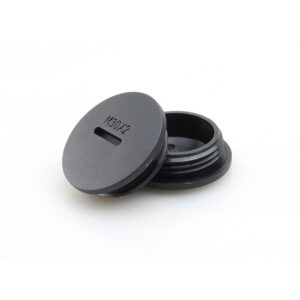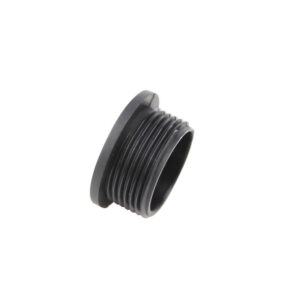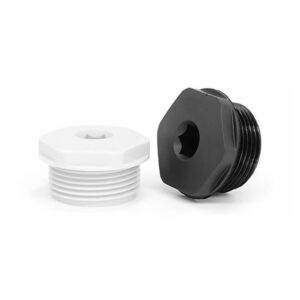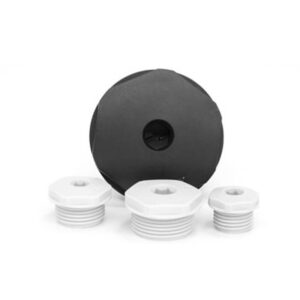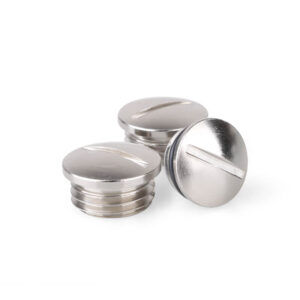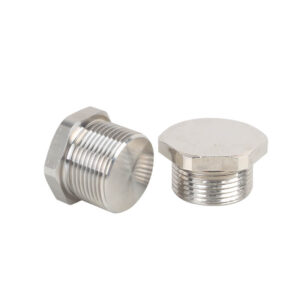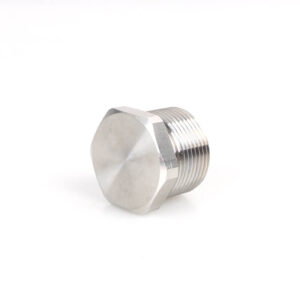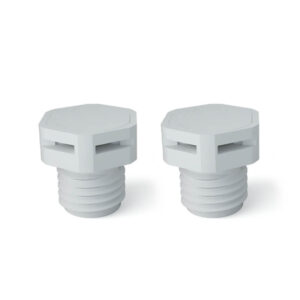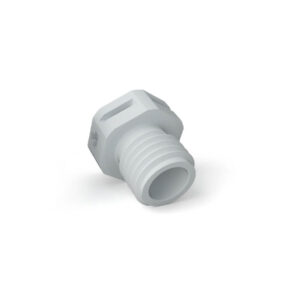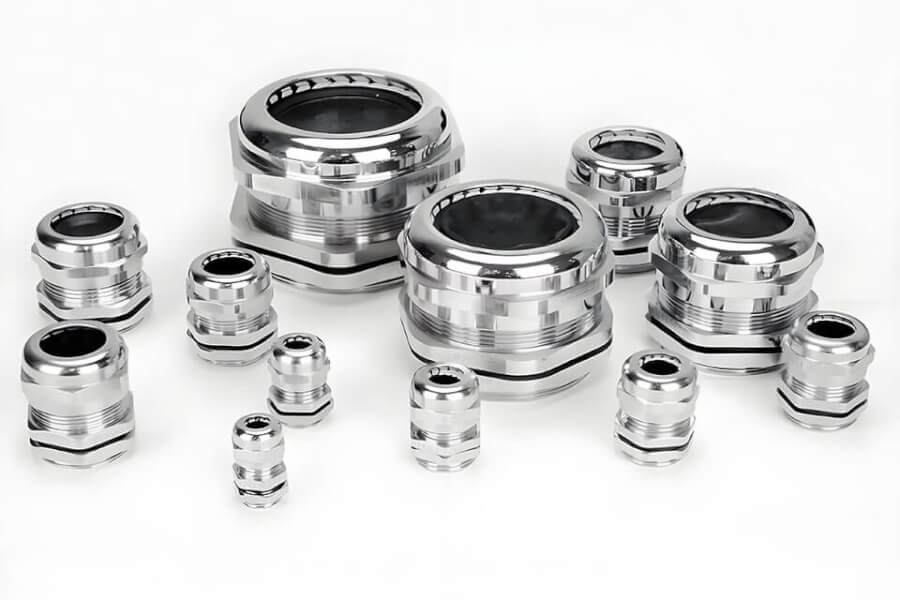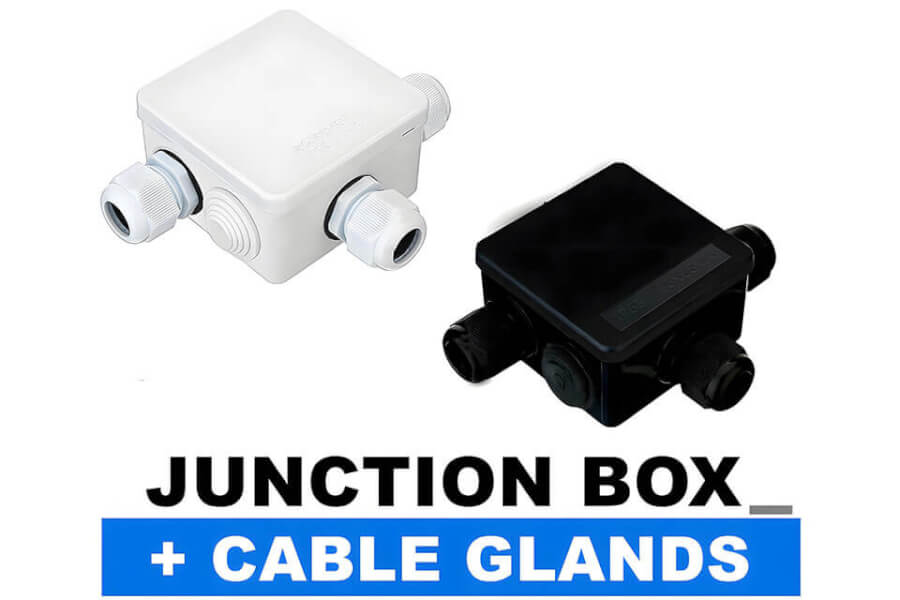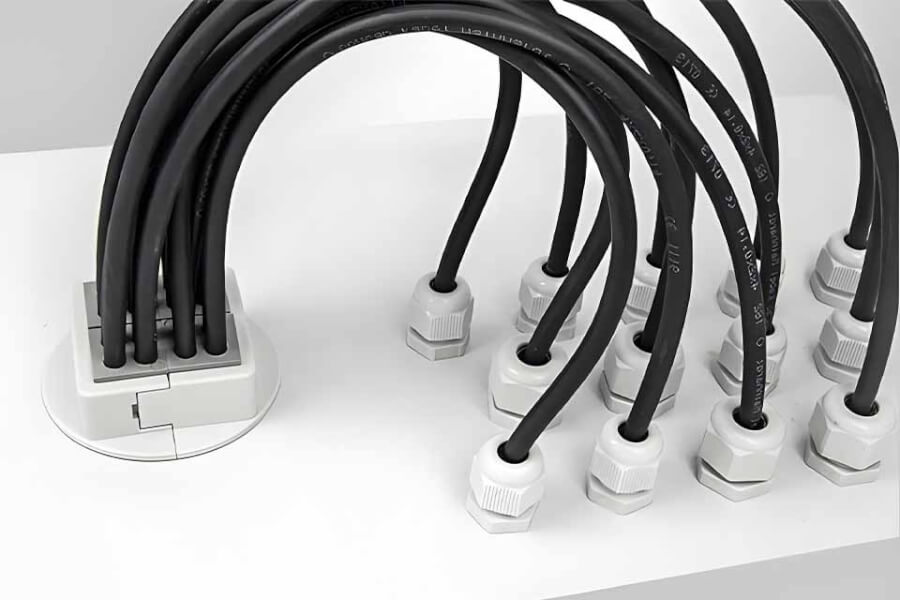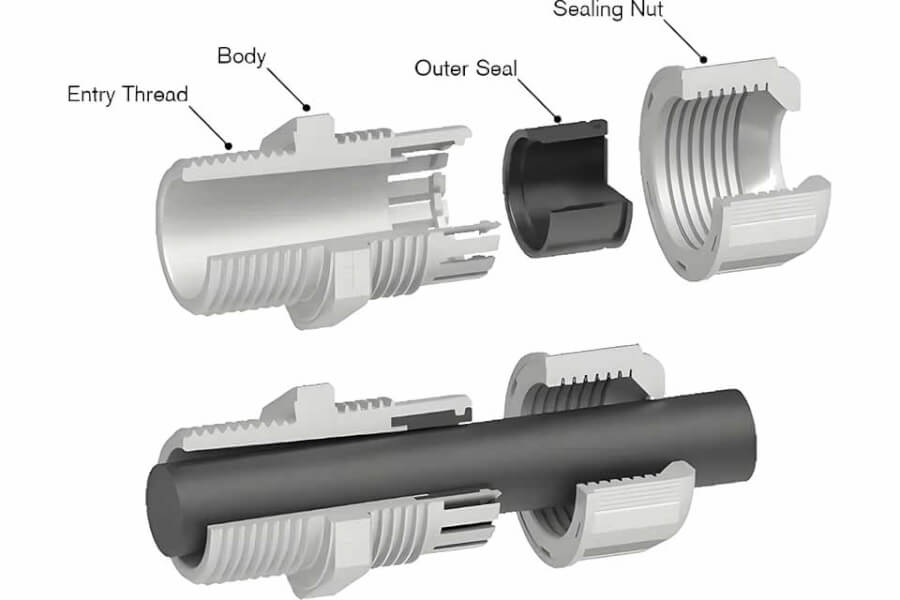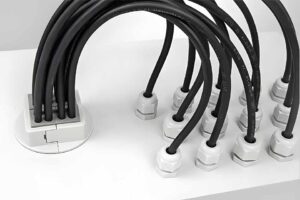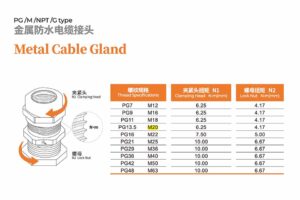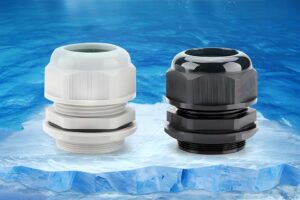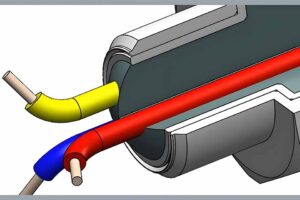Indholdsfortegnelse
Er kabelforskruninger vandtætte? Ja, det er de! Her er, hvad du skal vide
1. Introduktion: Det er vigtigt at holde vandet ude!
Er dine ledninger sikre mod vand? Dette er en stor spørgsmål. Ledninger bærer strøm. Vand og strøm passer ikke så godt sammen. Det kan være farligt! Kabler, der løber udenfor eller på våde steder, står over for en problem: Vand, regn, støv og snavs kan trænge ind. Det kan ødelægge ting. Det kan få maskiner til at holde op med at fungere. Det kan endda forårsage stød. Skræmmende, ikke sandt?
Så.., Er kabelforskruninger vandtætte?
Ja! Mange kabelforskruninger er lavet til at være vandtætte. Tænk på dem som små bodyguards til dine kabler. De vikles rundt om kablet, hvor det kommer ind i en kasse eller maskine. De laver en tæt forsegling. Denne forsegling forhindrer vand og støv i at trænge ind.
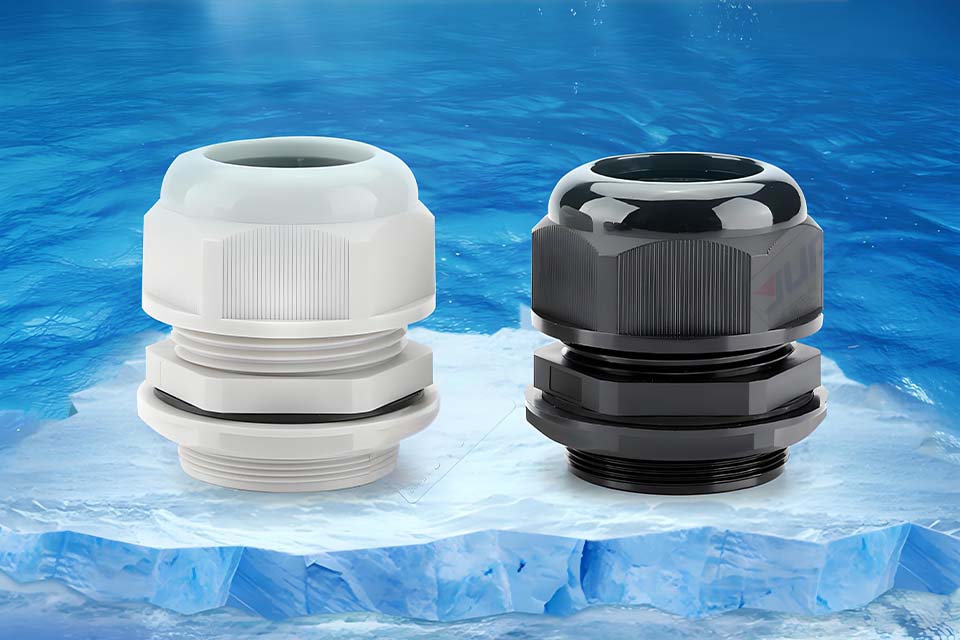
Hvorfor er det så vigtigt?
- Den sørger for, at strømmen flyder sikkert.
- Det forhindrer metaldele i at ruste (korrosion).
- Det får maskinerne til at holde længere.
- Det beskytter folk mod stød.
Disse særlige vandtætte kabelforskruninger er supervigtige. De er med til at sikre, at alt fungerer, som det skal, især på vanskelige steder som udenfor i regnvejr, på travle fabrikker eller endda i nærheden af havet. Denne guide fortæller dig alt om vandtætte kabelforskruninger. Vi lærer, hvordan de fungerer, hvilke typer der findes, og hvordan man vælger den bedste.
2. Hvad gør en kabelforskruning vandtæt? Tætninger og klassificeringer!
Hvordan stopper en lille del som en kabelforskruning vand? Det er ikke magi! Det er smart design.
Forestil dig, at du har en god regnfrakke på. Den holder dig tør, fordi materialet stopper vandet, og lynlåse og knapper lukker tæt. Vandtætte kabelforskruninger fungerer på samme måde.
Den store hemmelighed: IP-ratings
Har du set koder som IP68-klassificering? Det er supervigtigt for vandtætte ting. "IP" betyder "Ingress Protection". Tallene fortæller dig, hvor godt det beskytter mod, at der kommer ting ind.
- Det første tal (som '6' i IP68) fortæller om beskyttelse mod faste stoffer (som støv). '6' er det bedste - det betyder fuldstændig støvtæt.
- Det andet tal (ligesom '8' i IP68) fortæller om beskyttelse mod vand.
- IP67 betyder, at den kan gå under vand (op til 1 meters dybde) i kort tid.
- IP68 betyder, at den kan gå dybere under vandet i længere tid (f.eks. 1 meter dybt i mere end 30 minutter). Det er det, de fleste mennesker mener med virkelig "vandtæt".
- IP69K er endnu hårdere - den kan klare kraftige vandstråler, som f.eks. højtryksrensning!
Hvis en kabelforskruning har en høj IP-klassificering som IP68, ved du, at den er bygget til at holde vand ude!
Men vent, der er en fare! Hvis du bruger en kirtel med forkert IP-klassificering, eller hvis den ikke er forseglet korrekt, vand vilje Kom ind. Tænk på en lillebitte lækage i en båd - den starter i det små, men skaber hurtigt store problemer! Vand, der sniger sig ind i elektriske kasser, forårsager rust, kortslutninger og nedbrud. Det koster penge at reparere og kan lukke vigtige maskiner ned. Derfor er det vigtigt at vælge den rigtige vandtæt kabelforskruning er ikke bare rart, det er nødvendigt.
Hvordan de afslutter aftalen
Vandtætte kirtler bruger specielle dele til at lave en tæt forsegling:
- Forseglinger: Bløde ringe lavet af gummi eller lignende. Når du strammer forskruningen, presses disse ringe rundt om kablet og ind i forskruningen. Det blokerer eventuelle huller, hvor vand kan snige sig ind. Nogle kraftige kabelforskruninger, kaldet pansrede kabelforskruninger, har endda to tætninger for ekstra sikkerhed!
- Kompressionsmøtrikker: Det er den del, man strammer. Den skubber tætningerne på plads.
- Stærke materialer: Kirtlens krop skal også være hårdfør! Gode materialer knækker ikke eller korroderer (ruster) let.
Materialer, der betyder noget
Det stof, kirtlen er lavet af, hjælper den med at forblive vandtæt:
- Plast (nylon/PVC): Let, ruster ikke, god til mange opgaver.
- Metal (messing, rustfrit stål): Super stærk!
- Messing er hårdfør og bekæmper rust godt mange steder.
- Rustfrit stål (især Rustfrit stål i marinekvalitet 316) er mesteren mod rust, selv fra saltvand! Det holder i meget lang tid.
Ved at bruge den rigtige tætning og stærke materialer, der er klassificeret med et højt IP-nummer, bliver kabelforskruninger virkelig vandtætte kabelforskruninger. De stopper den problem af vandskader, før de opstår.
3. Typer af vandtætte kabelforskruninger: Find dit perfekte match
Ikke alle vandtætte kabelforskruninger er ens. De findes i forskellige former, størrelser og materialer. At vælge den rigtige afhænger af dine specifikke behov. Brug af den forkerte type kan føre til problemer senere - som lækager eller skader! Det er der ingen, der ønsker.
Her er de vigtigste typer, du kan finde:
Baseret på materiale:
- Vandtætte kabelforskruninger af metal:
- Kabelforskruninger af messing: Disse er arbejdsheste! De er stærke, holdbare og modstår rust i mange fabriksindstillinger. God værdi.
- Kabelforskruninger i rustfrit stål: Den hårdeste! Rustfrit stål i marinekvalitet 316 er fantastisk til salt luft eller vand (som på både eller nær kysten). De holder i evigheder, selv på barske steder. Perfekt, når du har brug for den bedste beskyttelse.
- Vandtætte kabelforskruninger af plast (nylon/PVC):
- De er lettere end metal.
- De ruster ikke og modstår kemikalier godt.
- Bruges ofte i elektronik, fødevareforarbejdning, eller hvor vægten er vigtig.
- Et godt og billigt valg til mange udendørs og indendørs formål.
Baseret på kabeltypen:
- Forskruninger til pansrede kabler: Pansrede kabler har ekstra beskyttelseslag af metal. Disse kabelforskruninger er kraftige. De bruger ofte to sæler: en til den ydre kabelkappe og en til de indre dele. Det giver ekstra sikkerhed og greb. Nødvendigt på hårde industrielle steder.
- Forskruninger til ikke-armerede kabler: Til almindelige kabler uden metalpanser. Det er den mest almindelige type. De giver stadig en god vandtæt forsegling.
Særlige typer:
- Kabelforskruninger med flere huller: Har du mere end ét kabel, der skal ind i en boks? I stedet for at bore mange huller, så brug ét Kabelforskruning med flere huller! Den har flere huller i en pakdåse, som hver især forsegler sit eget kabel. Sparer plads og installationstid.
- Kirtler i marinekvalitet: Bygget ekstra hårdt til livet i havet! Bruges ofte kabelforskruninger i rustfrit stål (klasse 316) og specielle tætninger til at bekæmpe saltvandskorrosion. Et eksempel: Seaview kabelforskruninger.
- Eksplosionssikre forskruninger (ATEX/IECEx-certificeret): Bruges på farlige steder, hvor gnister kan forårsage brand eller eksplosion (f.eks. på boreplatforme eller kemiske anlæg). De har særlige ATEX-certificering. De holder eventuelle gnister sikkert inde.
Vores løsning: Kvalitetsforskruninger fra Kina
Føler du dig forvirret over alle valgmulighederne? Er du bekymret for at finde en pålidelig kirtel, der ikke svigter? Her er den løsning: Vi er en førende producent af kabelforskruninger i Kina. Vi forstår disse udfordringer. Vi fremstiller høj kvalitet vandtætte kabelforskruninger du kan stole på.
Det tilbyder vi:
- Holdbar vandtæt kabelforskruning af metal muligheder (som hårdfør messing og førsteklasses rustfrit stål).
- Pålidelig og omkostningseffektiv Vandtæt kabelforskruning af plast valg (ved brug af stærk nylon/PVC).
- Pladsbesparende flerhuls kabelforskruning design til komplekse ledninger.
Vores kirtler er lavet til at opfylde høje standarder (som f.eks. IP68-klassificering) til at løse din vandtætning problemer. Vi fokuserer på kvalitetsmaterialer og præcis fremstilling, så du får en perfekt forsegling hver gang.
| Kirteltype | Vandtæt klassificering | Bedste brugssag | Vores tilbud? |
|---|---|---|---|
| Rustfrit stål (316) | IP68 / IP69K | Marine, udendørs | Ja! |
| Nylon/PVC (plast) | IP67 / IP68 | Almindelig brug, industriel | Ja! |
| Messing | IP66 / IP68 | Industri, Maskiner | Ja! |
| Multi-hul | IP67 / IP68 | Flere kabler | Ja! |
Tabellen er baseret på branchedata og fælles specifikationer.
At vælge den rigtige type betyder sikker og langvarig beskyttelse af dine vigtige elektriske forbindelser.
4. Hvor har du brug for vandtætte kabelforskruninger? Vigtige anvendelsesområder
Vandtætte kabelforskruninger er ikke kun til ét job. De er nødvendige næsten overalt, hvor ledninger møder omverdenen eller hårde forhold. Tænk på alle de steder, hvor elektricitet løber i nærheden af vand, støv eller vibrationer. Det er mange! At bruge det forkerte stik her er at bede om problemer. Nedetid, reparationer, sikkerhedsrisici - det er virkelige problemer. problemer forårsaget af vand, der trænger ind i elektriske systemer.
Her er nogle vigtige steder, hvor vandtætte kabelforskruninger er helte:
Udendørs belysning og skilte:
- Gadelamper, havelamper, LED-skilte. De er ude i regn, sne og sol hele året!
- Problem: Vand, der siver ind i forbindelserne, kan kortslutte lyset eller forårsage rust.
- Løsning: IP68 vandtætte kabelforskruninger af plast eller vandtætte kabelforskruninger af metal holder vand ude og sikrer, at lyset forbliver tændt.
Industrielle maskiner og fabrikker:
- Fabrikker kan være våde, støvede eller have masser af vibrationer. Maskiner skal have strømkabler, der er forsvarligt forbundet.
- Ophidselse: Vandsprøjt fra rengøring, kølervæskedråber eller støv kan let trænge ind i kontrolpaneler eller motorer, hvis de ikke er forseglede. Det stopper produktionen!
- Løsning: Hårdfør messing eller kabelforskruninger i rustfrit stålDe giver en robust, vandtæt forsegling (IP68), der håndterer vibrationer og barske forhold. Det holder fabrikkerne kørende.
Havmiljøer (både, havne, offshore):
- Saltvand er meget ætsende (forårsager hurtigt rust!). Elektronik på både, skibe eller boreplatforme har brug for ekstrem beskyttelse.
- Ophidselse: Konstant fugt, salttåge og soleksponering vil hurtigt ødelægge normale stik. Sikkerhed er afgørende til søs!
- Løsning: Kirtler af marinekvalitetisær kabelforskruninger i rustfrit stål (klasse 316), er afgørende. De modstår saltkorrosion og giver en langtidsholdbar IP68-forsegling. Seaview-kabelforskruninger er et populært eksempel, der er kendt for dette.
Vedvarende energi (sol og vind):
- Solpaneler og vindmøller er altid udendørs og udsat for al slags vejr.
- Problem: Forbindelser i samledåser skal forblive tørre i årtier for at producere strøm effektivt.
- Løsning: Høj kvalitet, UV-bestandig plastik eller vandtætte kabelforskruninger i rustfrit stål med IP68-klassificering beskytter disse vitale forbindelser, så de fungerer i lang tid.
Telekommunikation og datacentre:
- Udendørs skabe til internet- eller telefonlinjer skal beskyttes. Selv indendørs datacentre bekymrer sig om støv eller utilsigtet spild.
- Ophidselse: Det er et stort problem at miste data eller kommunikation på grund af en mislykket forbindelse.
- Løsning: Pålidelige vandtætte forskruninger sikrer, at signal- og strømforbindelser forbliver rene og tørre.
Samledåser:
- Enhver elektrisk samledåse Brug udendørs eller i våde områder kræver vandtætte kabelindgange.
- Løsning: Brug af passende vandtætte kabelforskruninger for hvert kabel, der kommer ind i boksen, opretholder boksens samlede beskyttelsesgrad.
Som producent med base i Kina ser vi disse behov på første hånd på tværs af mange brancher. Vi designer vores metal, plastik, og Kabelforskruninger med flere hullersammen med vores holdbare Samledåserfor at give den pålidelige, vandtætte løsning der er nødvendige i alle disse krævende applikationer.

5. Sådan vælger du den rigtige vandtætte kabelforskruning: Nemme trin
At vælge den rigtige vandtæt kabelforskruning Det virker svært, ikke? Med så mange typer og vurderinger, hvordan vælger man så? At vælge dårligt er en stor problem. En underdimensioneret pakdåse vil ikke tætne. En overdimensioneret får måske ikke fat i kablet. Det forkerte materiale kan ruste væk. Denne rører på sig situationen, hvilket fører til netop de lækager, du forsøgte at forhindre!
Men bare rolig! Her er en nem guide. Tænk på det som at finde den rigtige størrelse sko - du skal have en god pasform!
Her er de vigtigste ting, du skal tjekke:
Hvilken IP-klassificering har du brug for?
- Tænk over hvor kirtlen vil være.
- Bare vandsprøjt eller regn? IP65 eller IP66 kan være okay.
- Midlertidigt dyp i vand? IP67.
- Er den ofte under vand, eller skal den imprægneres? IP68-klassificering er dit bedste bud.
- Bliver du ramt af højtryksrensere? Kig efter IP69K.
- Vores løsning: Vi tilbyder forskruninger, der opfylder høje IP-klasser som IP68Perfekt til de fleste vandtætte behov.
- Tænk over hvor kirtlen vil være.
Hvad er din kabelstørrelse (diameter)?
- Dette er super vigtigt! Forskruningen skal passe godt til dit kabel.
- Mål den udvendige diameter (tykkelse) på dit kabel.
- Kabelforskruninger leveres med et "klemmeområde" (f.eks. 5 mm - 10 mm). Dit kabels diameter skal falder inden for dette interval for en god forsegling.
- Problem: At gætte på størrelsen fører ofte til lækager!
Hvilken hulstørrelse og gevindtype?
- Forbindelsen skal passe ind i hullet i din boks eller dit panel.
- Tjek den nødvendige gevindstørrelse (f.eks. M16, M20, PG13,5 eller NPT).
- Sørg for, at forskruningens gevind passer til hullets gevind.
Hvilket materiale er bedst?
- Tænk på miljøet igen:
- Normal udendørs/indendørs? Plastik (nylon) er ofte fantastisk - let og modstår rust. Vi tilbyder fremragende Vandtæt kabelforskruning af plast muligheder.
- Industrielle omgivelser, brug for styrke? Messing er et godt valg.
- Tæt på saltvand, kemikalier eller brug for ekstrem holdbarhed? Rustfrit stål (316) er det bedste valg. Tjek vores robuste vandtæt kabelforskruning af metal.
- Tænk på miljøet igen:
Har du særlige behov?
- Brug for eksplosionsbeskyttelse? Kig efter ATEX-certificering.
- Kører du med flere kabler? Overvej vores pladsbesparende flerhuls kabelforskruning.
- Brug for ekstra trækaflastning (for at forhindre, at der trækkes i kablet)? De fleste forskruninger tilbyder dette, men nogle er designet til ekstra styrke.
Brug for hjælp til at vælge?
Føler du dig usikker? Det er helt i orden! Som erfaren kabelforskruning producenter, kan vi hjælpe. Vi kender vores produkter ud og ind. Vi kan guide dig til den perfekte vandtæt kabelforskruning - uanset om det er metal, plast eller multihul - for at løse din specifikke forbindelse problem. Besøg vores hovedkontor kabelforskruning for at se hele vores sortiment, eller kontakt os for at få råd! Vi sørger for, at du får den rigtige pasform til pålidelig, langvarig vandtæt beskyttelse.
6. De bedste mærker af vandtætte kabelforskruninger (og hvorfor kvalitet er vigtig)
Når du har brug for pålidelig vandtætning, er det vigtigt at vælge et godt mærke. Nogle virksomheder er kendt for at lave vandtætte kabelforskruninger. Baseret på industriens tilstedeværelse i 2025 omfatter nogle af topnavnene:
- TPC Wire & Cable Corp: Kendt for robuste kabler og tilbehør, herunder vandtætte forskruninger som f.eks. splitnylontyper.
- Seaview: Specialiserer sig i Kirtler i marinekvalitetog bruger ofte UV-stabil plast eller højkvalitets kabelforskruninger i rustfrit stål (316) til både og barske forhold.
- STEGO, Inc: Fokuserer på termisk styring og komponenter til indkapslinger, herunder pålidelige kabelindføringssystemer.
- Switchcraft, Inc: Fremstiller konnektorer og komponenter, der ofte bruges i industrielle og krævende applikationer.
Disse virksomheder har opbygget et ry for kvalitet. Men hvad med at finde god værdi og kvalitet?
Problemet med billige kirtler
Det kan være fristende at købe den billigste kabelforskruning, man kan finde. Men det fører ofte til større problemer. Kirtler af lav kvalitet kan:
- Brug billig plast, der let revner i sol eller kulde.
- Har dårligt fremstillede tætninger, der ikke komprimerer ordentligt.
- Brug metal, der ruster hurtigt.
- Har forkert IP-klassificering (de siger IP68, men lækker!).
Denne rører på sig situationen - du tror, at du er beskyttet, men der trænger vand ind og forårsager skader, nedetid og sikkerhedsrisici. Du ender med at bruge mere penge på at reparere ting senere.
Vores løsning: Pålidelig kvalitet fra Kina
Som en dedikeret producent af kabelforskruninger i KinaVi tilbyder en smart løsning. Vi fokuserer på at producere vandtætte kabelforskruninger der lever op til høje internationale standarder (som IP68-klassificering og ved at bruge kvalitetsmaterialer som 316 rustfrit stål eller slidstærk nylon), men til en konkurrencedygtig pris.
Hvorfor vælge os?
- Styrke i produktionen: Vi har moderne fabrikker og streng kvalitetskontrol.
- Fokus på materiale: Vi bruger certificerede råvarer til vores vandtætte kabelforskruninger af metal og vandtætte kabelforskruninger af plast.
- Testning: Vores kirtler er testet for at sikre, at de lever op til deres IP-klassificering.
- Rækkevidde: Vi tilbyder forskellige typer, herunder standard, metal, plastik og Kabelforskruninger med flere huller.
- Værdi: Du får pålidelig, langtidsholdbar beskyttelse uden at betale for meget.
Selv om vi måske endnu ikke er et kendt navn på verdensplan som nogle ældre mærker, er vi forpligtet til at levere den kvalitet og ydeevne, du har brug for til at løse dine vandtætningsudfordringer effektivt. Vi står bag vores produkter.
7. Tips til installation: Få den rigtige tætning!
Du har valgt den perfekte vandtæt kabelforskruning. Fantastisk! Men vent - arbejdet er ikke færdigt endnu. Hvordan du installere den er lige så vigtig som selve kirtlen. En kirtel i topkvalitet, der er dårligt installeret, kan stadig lække! Dette er et almindeligt problem der fører til frustration og skader. Lad os agitere denne tanke: Forestil dig at bruge tid og penge på at vælge en IP68-forskruning og så opleve, at den svigter på grund af en simpel installationsfejl!
Undgå den frustration! Sådan installerer du din vandtæt kabelforskruning korrekt for en virkelig vandtæt forsegling:
Trin 1: Tjek dine dele
- Sørg for, at du har pakdåsehus, pakning(er), skive (hvis den medfølger) og låsemøtrik.
- Sørg for, at forskruningens klemområde passer til din kabeldiameter.
- Tjek, at gevindstørrelsen passer til hullet i dit skab.
Trin 2: Forbered kablet og hullet
- Rengør kabelenden. Sørg for, at yderkappen ikke er beskadiget, hvor tætningen skal sidde.
- Sørg for, at hullet i kabinettet er rent og glat uden skarpe kanter.
Trin 3: Indsæt kirtlen
- Skru kirtlens hætte (kompressionsmøtrik) af.
- Hvis der er en låsemøtrik, skal du sætte den på kirtlens gevind først.
- Stik gevindstykket gennem hullet i skabet udefra.
- Spænd låsemøtrikken indefra for at fastgøre pakdåsen til skabsvæggen. Spænd ikke for meget endnu, hvis du har brug for at placere den.
Trin 4: Sæt kablet i
- Skub forsigtigt kablet gennem forskruningen udefra.
- Sørg for, at der går nok kabel igennem til din forbindelse inde i boksen.
Trin 5: Stram til for at forsegle!
- Skub forskruningens pakning og skive (hvis den er separat) over kablet og ind i forskruningen.
- Skru hætten (kompressionsmøtrikken) på.
- Spænd hætten godt fast. Dette er det afgørende trin! Det komprimerer forseglingen omkring kablet og skaber den vandtætte barriere. Brug den rigtige størrelse skruenøgle - en tang kan beskadige forskruningen!
- Spænd låsemøtrikken på indersiden helt til (hvis du ikke allerede har gjort det).
Trin 6: Test (hvis det er muligt)
- Til kritiske applikationer, især dem, der har brug for en IP68-klassificeringer det smart at teste.
- Hvis det er sikkert og praktisk muligt, kan du forsigtigt oversprøjte forbindelsen med vand (tjek producentens retningslinjer) eller udføre en nedsænkningstest, hvis udstyret tillader det.
- Inspicér visuelt: Ser tætningen jævnt komprimeret ud? Er kirtlen tæt?
Almindelige fejl, der skal undgås:
- Forkert størrelse: Brug af en forskruning, der er for stor eller for lille til kablet = garanteret lækage!
- Underopstramning: Hvis hætten ikke strammes nok, vil forseglingen ikke sidde ordentligt fast.
- Overdreven stramning: Hvis du skruer den for hårdt ned, kan du beskadige forskruningen eller kablet. Brug det anbefalede drejningsmoment, hvis det er tilgængeligt.
- Beskadiget kabel: Hvis man sætter en forskruning over en skåret eller skrabet kabelkappe, kan det forhindre en god tætning.
At følge disse trin giver den bedste løsning for en pålidelig, langvarig vandtæt forbindelse ved hjælp af din valgte metal eller vandtæt kabelforskruning af plast.
8. Ofte stillede spørgsmål (FAQ)
Har du spørgsmål om vandtætte kabelforskruninger? Du er ikke alene! Her er svar på nogle af de mest almindelige:
Q: Er alle Er kabelforskruninger vandtætte?
- A: Nej. Dette er en stor misforståelse og en potentiel problem! Kun kabelforskruninger, der er specielt designet og klassificeret til vandbeskyttelse (som dem med en IP68-klassificering eller tydeligt angivet som "vandtæt" eller "vandtæt") vil holde vand ude effektivt. Standardforskruninger giver måske støvbeskyttelse (som IP54), men stopper ikke regn eller nedsænkning. Tjek altid IP-klassificeringen!
Q: Hvad er forskellen mellem IP67 og IP68?
- A: Begge giver høj beskyttelse. Den største forskel er nedsænkning i vand.
- IP67 = Beskyttet mod midlertidig nedsænkning (op til 1 meter i 30 minutter).
- IP68 = Beskyttet mod kontinuerlig nedsænkning under forhold, der er specificeret af producenten (ofte dybere end 1 meter eller i længere tid). For ægte "vandtæt" tillid, især udendørs eller under jorden, er IP68 normalt det bedste. løsning.
- A: Begge giver høj beskyttelse. Den største forskel er nedsænkning i vand.
Q: Hvor længe holder vandtætte kabelforskruninger?
- A: Det afhænger af materialet og miljøet.
- Høj kvalitet kabelforskruninger i rustfrit stål i marine omgivelser kan holde 10+ år.
- God plastik (nylon) kirtler kan holde 5-10 år, men UV-eksponering kan forkorte dette, hvis de ikke er UV-stabiliserede.
- Messing kirtler har en god holdbarhed, måske 8-10 år på mange industrielle steder.
- Ophidselse: Billige materialer eller skrappe kemikalier kan forkorte levetiden drastisk og føre til fejl. Vælg kvalitet for lang levetid!
- A: Det afhænger af materialet og miljøet.
Q: Kan jeg bruge en vandtæt forskruning på alle typer kabler?
- A: For det meste ja, så længe kablets ydre diameter passer til forskruningens klemområde. Der findes dog særlige forskruninger til flade kabler eller armerede kabler. Brug af den rigtige type af forskruninger til dit kabel sikrer den bedste tætning og trækaflastning. Vores metal, plastik, og Kirtler med flere huller dækker de fleste almindelige runde kabeltyper.
Q: Skal jeg bruge specialværktøj for at installere dem?
- A: Normalt er det bare standardnøgler i den rigtige størrelse til at spænde kirtelhuset, låsemøtrikken og hætten. Brug af tænger er generelt ikke anbefales, da det kan skade kirtlen.
Q: Er vandtætte kabelforskruninger dyre?
- A: Priserne varierer efter størrelse, materiale og mærke. Vandtætte kabelforskruninger af plast er normalt de mest overkommelige løsning. Rustfrit stål er typisk den dyreste på grund af materialeomkostningerne, men giver den bedste langtidsholdbarhed på barske steder. Som en producent i KinaVi tilstræber at give fremragende værdi i hele vores sortiment.
9. Konklusion: Sikr dine forbindelser med vandtætte forskruninger
Så.., Er kabelforskruninger vandtætte? Som vi har set, er svaret helt klart JAmen kun hvis du vælger den rigtige type og installerer den korrekt!
Lad os opsummere rejsen:
- Problem: Blotlagte kabelgennemføringer er sårbare punkter, hvor vand, støv og snavs kan trænge ind i elektriske systemer.
- Ophidselse: Denne invasion fører til farlige kortslutninger, dyre udstyrssvigt, korrosion og nedetid. At ignorere denne risiko er at bede om problemer, især i udendørs, industrielle eller marine omgivelser.
- Løsning: Høj kvalitet vandtætte kabelforskruningersom dem med en IP68-klassificeringgiver en sikker, vandtæt forsegling. Valg af det rigtige materiale (rustfrit stål, messing eller plastik), størrelse og type (som standard eller multi-hul) er nøglen.
Brug af den rigtige vandtæt kabelforskruning er ikke bare en lille detalje; det er afgørende for:
- Sikkerhed: Beskyttelse af mennesker mod elektriske farer.
- Pålidelighed: At holde maskiner og systemer kørende uden afbrydelser.
- Lang levetid: Forhindrer korrosion og skader, så udstyret holder længere.

Din betroede partner i beskyttelse
Vi, som en dedikeret producent af kabelforskruninger i Kinaforstår vigtigheden af pålidelige forbindelser. Vi er forpligtet til at levere topkvalitet Løsninger til din vandtætning problemer. Vores sortiment omfatter:
- Robust vandtæt kabelforskruning af metal (Messing og rustfrit stål)
- Alsidig Vandtæt kabelforskruning af plast (Nylon/PVC)
- Effektiv flerhuls kabelforskruning designs
- Holdbare støtteprodukter som samledåse muligheder
Vi kombinerer kvalitetsmaterialer, præcis fremstilling og streng testning (hvilket sikrer vurderinger som IP68) for at levere produkter, du kan stole på, alt sammen til en konkurrencedygtig værdi.
Efterlad ikke dine elektriske forbindelser ubeskyttede! Sikr dem med den rigtige vandtætte kabelforskruninger. Udforsk vores produktsortiment, eller kontakt os i dag for at finde det, der passer perfekt til din applikation. Hold vandet ude, hold strømmen kørende, og hold dine systemer sikre!

